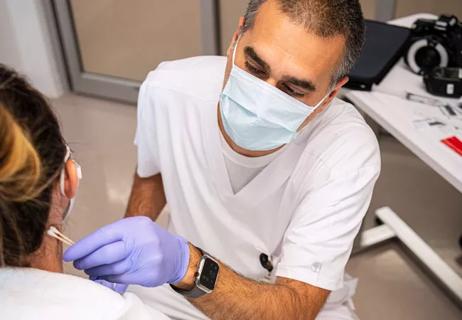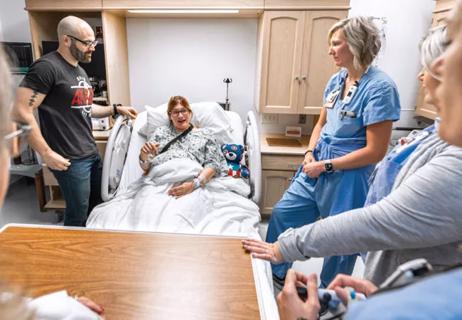New process for treating infants with chorio diagnosis

In 2012, Cleveland Clinic’s Hillcrest Hospital earned Baby-Friendly USA Designation, indicating that it provides an optimal level of care for infant feeding and mother/baby bonding. As a baby-friendly facility, Hillcrest Hospital supports breastfeeding and rooming in (keeping mothers and babies together).
Cleveland Clinic is a non-profit academic medical center. Advertising on our site helps support our mission. We do not endorse non-Cleveland Clinic products or services. Policy
When the hospital’s neonatal intensive care unit experienced a high census, healthcare providers began to look at measures that would both reduce admissions to the NICU and keep mothers and babies together on the postpartum Mother Baby Unit. One of the groups they considered were newborns with an asymptomatic rule out chorioamnionitis, an inflammation of the fetal membranes caused by a bacterial infection.
In 2015, approximately 75 newborns at greater than 37 weeks’ gestation received treatment at Hillcrest’s NICU for rule out chorio diagnosis. Standard practice at the time was to admit the newborn to the NICU for 48 hours for administration of antibiotics. “This separates our infants from their mothers and decreases the amount of time for bonding, which can decrease breastfeeding success,” says Susan Dunlap, MSN, MHA, RN, CLC, Assistant Nurse Manager on the Mother Baby Unit.
A team of caregivers from Labor and Delivery, the Mother Baby Unit and the NICU met once a week for five months to develop new processes that would allow infants requiring antibiotic administration for rule out chorio to room in with their mothers. Among its tasks, the group determined four criteria for inclusion:
Tina DiFiore, MSN, RN, NNP-BC, a clinical nurse specialist in Hillcrest Hospital’s NICU, taught several classes for nurses in the newborn nursery on the Mother Baby Unit to learn how to recognize chorio signs and symptoms, as well as how to administer intravenous antibiotics. Nurses also reviewed the Chorio Care Path for physicians, developed in 2014 by Cleveland Clinic, and were encouraged to ensure that physicians followed the guidelines.
In January 2016, infants with a chorio diagnosis began being treated in the newborn nursery in the Mother Baby Unit. During a six-month transition period, babies initially went to the NICU to get their IVs started, then they transitioned to the Mother Baby Unit after the first dose of antibiotics. “Over time, as our nurses were educated and became more comfortable starting infant IVs, the babies came directly to us,” says Dunlap.
By July 2016, the transition was complete, and infants with a chorio diagnosis who met the criteria were treated in the newborn nursery.
Last year, 58 infants received treatment in the newborn nursery. “Now those babies spend all of their time in the room with their parents except for when they receive antibiotic administration in the newborn nursery,” says Dunlap. “Parents and their families are very happy that we’ve made the change and they have more time with the baby.”

Nurses play pivotal role in patients’ ability to recover in the comfort of their own homes

Advocating for patient safety is imperative in fast-paced surgical settings

Advice for those pursuing a WOC nursing career

Redesigned protocols enhance infection-prevention measures

Longevity in healthcare, personal experiences may provide caregivers with false sense of confidence

Specialized team prioritizes trauma-informed care and evidence collection

Collaborative approach leans on expertise of nurses

TeamBirth aims to improve outcomes by facilitating collaboration between patients and caregivers